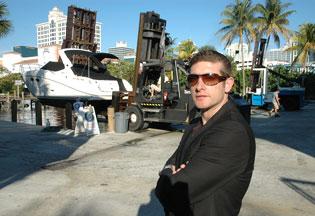South Florida Business Journal Oscar Pedro Musibay December 2012

The six-story tall rain tree that would be relocated to allow for construction of the three-tower Marina Lofts project in downtown Fort Lauderdale can be moved, county commissioners agreed Tuesday.
The Broward County Commission voted 7-2 to reject a request to declare the tree “historical” and prevent its relocation. People opposing the tree’s move raised concern about the potential for the tree’s loss and the significance of the tree’s history at 424 SW Fourth Ave.
Asi Cymbal, developer of the proposed Marina Lofts project, said that the commission’s decision bodes well for the future of the city.
“The commissioners saw the bigger picture and were affected by the warmth and positivity in the room,” he said. “That bodes well for the future of Fort Lauderdale and the county.”
Cymbal is proposing to build three towers with fewer than 1,000 rental apartments, with retail on the ground floor.
The project has reignited the debate about Fort Lauderdale’s identity: On one side are some locals - residents, activists, business-owners – who want to hold-on to the city’s small-town roots; on the other are landowners, investors and professionals who want to see Fort Lauderdale become a destination and a 24/7 urban community.
In the past, anti-growth factions in the city have derailed promising projects, such as the Palazzo at the foot of the Las Olas bridge. Palozzo would have replaced a surface lot with a mixed-used urban village development of condos and retail.
The city initially gave a green light to the developers, but then some residents expressed opposition and a new commission pulled its support. As a result, the city was sued for more than $40 million and finally settled last year by paying out $475,000. The site remains underutilized as a parking lot.
Cymbal has been working with neighborhood residents to address issues including the scale of the project, reducing it from more than 1,000 to less than 1,000 units and has adjusted the heights of the buildings to make them more acceptable.
He has also pledged to post a $1 million bond that he would lose if the tree were to die.
He said he hired Environmental Design, which relocates the tree the White House uses for its Christmas celebration, to move the rain tree.
“We are relocating and preserving our raintree in a park specifically designed for it on our property,” he explained. “The Raintree Park was specifically selected by the chief arborist of the Fairchild Garden. We’re placing it on the southern tip of our property, in an area that will allow for maximum sunlight, and outside the construction zone.”
